
There are TONS of awesome multimedia activities you can do with interactive notebooks. They're easy and free! Get the how-to's and a downloadable template to get started!
Interactive notebooks have taken lots of classrooms everywhere by storm. The idea: a central space where students can create, write and make meaning.
When they’re done well, students get that spark of excitement. Learning goes to a different level.
When they’re done poorly, it becomes worksheets glued to pages.
Interactive notebooks don’t have to go in paper notebooks, though.
In fact, they can go in “digital notebooks”, and one option for those is Google Slides! (This will come as no surprise to regular Ditch That Textbook readers. I’ve suggested Google Slides for creating stop-motion animation, Instagram Stories-style activities, sticky note brainstorming, infographic-style icon boards, and more.)
Click on any button below to jump directly to that section
Why use Google Slides for interactive notebooks?
If you think about it, a digital slide presentation is a lot like a notebook.
- It has multiple pages (the slides).
- You can even resize its pages to the size of a standard sheet of paper. (File > Page setup > Custom > 8.5″ x 11″)
- It’s not linear like a document. You don’t write in lines (like a lined sheet of notebook paper). You design it however you want.
- The lines, shapes, text, images and more you can add to the slides are like the parts you glue on an interactive notebook … only MULTIMEDIA.
Google Slides is free. You can add as many pages to your digital notebook as you want.
You can rearrange them easily, adding new pages wherever you’d like.
And since they’re stored in the cloud (Google Drive), you can access them anywhere you have an Internet connection. (Even when you’re not connected to the Internet …)
Of course, this would totally work with PowerPoint (with or without Office 365). I’m a huge Google fan, so that’s how I tend to see the world. 🙂
Note: All of the instructions in this post refer to Google Slides in a browser (i.e. on a laptop or Chromebook). This is all possible using PowerPoint AND/OR using a mobile app (like on an iPad) … but for brevity and simplicity, the instructions here are geared toward laptops/Chromebooks.
Download your interactive notebook template
Want a copy of 15 pre-created templates from the activities I describe in this blog post?
Of course you do!
Click on the link above and click on "USE TEMPLATE" (If that link doesn’t work, click here and go to File > Make a copy …)
Of course, the notebook loses its magic if it becomes a prescribed set of step-by-step directions every time. Help students learn all of the features of Slides and how they can use them to uniquely display their learning. When they do that, they’re free to show their learning in their own personal way … and that’s WAY more powerful than following a recipe!
BONUS RESOURCE: Blanca Lemus, a sixth grade math and science teacher from California (and a member of Coachella CUE) shared slides from a presentation about interactive digital notebooks in middle and high school. Check it out by clicking here!
ANOTHER BONUS RESOURCE: Miriam Ramirez translated the Interactive Notebook Master Template into Spanish. Click here to download your copy of the INTERACTIVE NOTEBOOK MASTER TEMPLATE in Spanish!
Organizing your digital interactive notebook
Get everything started with any combination of the following …
1. Have students start with a brand new Google Slides presentation. (Add through the “New” button in Drive or by typing slides.new in your browser.)
2. … or, you could create a template to share with them. That would save them some time setting things up and get them right to work.
3. Start with a title slide.
- It could be as simple as using the pre-created title slide in the “Layout” tab in the toolbar.
- You could create a title slide in your template (see #2 above) that students could modify or fill in.
- Or you could turn students loose to create their own title slides, adding a webcam picture of themselves (Insert > Image > Camera), icons from The Noun Project, Bitmojis you’ve chosen (so they’re not inappropriate) and more. If you do this, you might want to limit the time they have to design their title slide … they could take all day creating it!
4. If they haven’t already, have them choose a slide size. A portrait (8.5″ x 11″) letter size or landscape (11″ x 8.5″) letter size could work. However, if they aren’t going to print them, you can make them any dimension you’d like! If it makes sense for the pages to look more like a strip (5″ x 11″), you can control that! They do have to be the same size all the way through, though … unless you make a specialized sub-notebook and link to it. (More on that later.)
Digital interactive posters are easy to access online. However, if they are in a letter size, they’re easy to print. Be mindful of the environment by not printing too much, of course. But if you want to print, printing some pages to show parents or hang on the wall in the hallway is pretty easy — especially if you can print in color!
There are certainly plenty of other things you can do to get your notebook ready. You know your students’ needs. If their notebooks need something else, add it to the list!
20 interactive notebook activities
Now, it’s time for the fun! What can we fill this notebook full of?
Here are a bunch of possible activities students can do with Google Slides interactive notebooks:
(Note: For any of these activities, you can have students create all of the parts themselves — or you could pre-create them before distributing them to students. Pre-creating can save students the time of making all of the parts of the activity. Letting students do it themselves (especially for simple, basic activities) can save you prep time!)
1. Image annotation
Add an image and annotate, pointing out parts of it with arrows and text boxes.
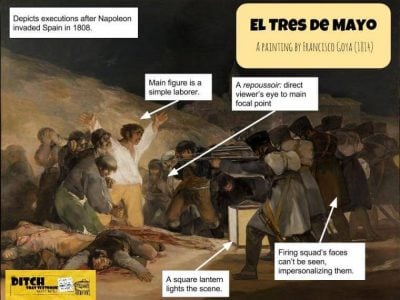


Have students pull in an image. It could be from a web search, uploading one from their device, or even taking one themselves with the webcam. From there, use the shapes (Insert > Shape) to help annotate the image. I like using the arrows. Draw one in and double-click it to turn it into a text box. Add text and you have a simple labeling activity.
- Parts of a tree
- Parts of an atom
- Important features in a painting
2. Caption This!
In this activity, students add speech bubble/thought bubble shapes over an image. That image could be found from the web or taken with the webcam. When they add the speech/thought bubble, they’re speaking for the characters in the image. This is great for history, literature, current events, etc. Read more about this in the Caption This! blog post.
3. Draggable manipulatives
Create lots of draggable shapes off to one side. (i.e. Rounded rectangles with vocabulary words, shapes for addition/subtraction, protons/neutrons/electrons for an atom) Have students drag them onto the screen in the right place to demonstrate understanding. Get more ideas for creating draggable manipulatives in this blog post.
4. Digital diorama/map
Recreate a scene from a story, history, etc. Have students use lines, shapes, even images to draw where the parts are in relation to each other. Add text boxes to label. Add a big text box (or write in the speaker notes at the bottom) to justify their thinking.
5. Comic strips
Have students add webcam images of themselves, of other things … shapes, Bitmojis, anything — to build out comic strips to demonstrate understanding.
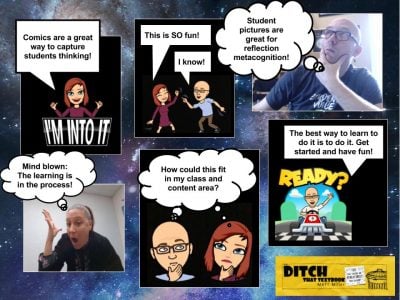


Pull in a series of several images and they can serve as a comic strip. Have students take pictures with their webcam. These visuals for foreign language instruction can be great comic strip starters, adding text and speech/thought bubbles to them to complete. For more ideas on creating comic strips, see this blog post!
6. Lab reports
Students can take images of what they do during science labs with the webcams of their devices. This goes for more than science labs, too! Anything they can demonstrate step by step with images can be great for this activity! Students describe their steps and show what they know.
Check out this Egg Journal example shared by Vicki Heupel. She found that kids never lose this lab report (which is an issue because it takes 7 days to finish including time to make the graph) and they are much more engaged by including a picture of their egg than they would be by drawing it. Original template created by SlidesMania.
Osmosis Lab Journal Template highlights:
- streamline data collection
- make qualitative data more realistic by including space for images
- make space for the end result graph to be posted in the same location as the rest of the lab
- provide an interactive glossary.
7. Series of pictures
Want students to show how to do a proper burpee in physical education? How to put icing on a cake? Have them take pictures with their webcam. Add a shape with a number written on it to number the images from start to finish. For math, this would be a great way to practice algorithms! Have students demonstrate that they can replicate the steps of the algorithm correctly.
8. Coordinate plane
Use the coordinate plane page in the interactive notebook master template I shared above. Students plot points and lines on the coordinate plane and explain their answers in text at the bottom!
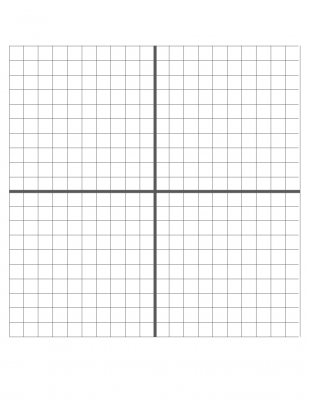


Grab an image of a coordinate plane off the web and set it as the background image of the slide (“Background …” button on the toolbar > Choose image). Students can use small circle shapes to plot points on the coordinate plane, connect them with lines, etc. Text boxes (or writing in the speaker notes at the bottom) let them describe their work.
9. Likert scale with explanation
A Likert scale lets you show how you feel on a scale of 1 to 5, 1 to 10, etc. Set up a number line at the top of a slide with a dot. Have students drag a dot on the scale, then use a text box below to describe why they feel that way.
10. Simple mini-poster
Add images and text to a slide much like you would a posterboard. Create a quick mini-poster on a slide! For more information about creating these mini-posters, see this blog post.
11. A whole-class interactive notebook
These interactive notebooks can be individual to the student. Or you can create a class interactive notebook where everyone interacts! Each student can have his/her own slide in one shared slide presentation. The collaborative aspect of this can be a lot of fun — but it can be chaotic until students understand how to work together in this shared digital space! For more information on how to make this work, see this post on shared slides activities.
12. Don’t write it, say it
To provide some variety — and an opportunity to improve their spoken voice — let students record their answer on video instead of writing it!
- Have them record a video with the webcam and insert it using Screencastify.
- Have them record a video on Flip and then link to it within their notebooks!
13. Don’t write it, act it out
Instead of just talking into the webcam as they did above, have students stand back from the webcam and act something out! It could be a scene from a play, a demonstration, a “people as props” activity, etc.
14. Shades of meaning
This idea came from fifth grade teacher Tony Vincent during his session of the Ditch That Textbook Digital Summit, a free annual online conference for teachers. He shares how his students use a thesaurus to find synonyms and antonyms for a word. They then drag them onto a scale to show their relationship for each other. Recreating a simple version of this activity fits well with an interactive notebook! Check out Tony’s template for this activity (File > Make a copy … to save it to your Google Drive).
15. Sticky note brainstorming
Sticky notes help us get our ideas out of our brains and organized! Google Slides has a shape that looks like a sticky note! Have students draw a sticky note shape on the screen. Use Ctrl+D to duplicate it over and over. Use the paint bucket icon in the menu bar to change the color of it. Now start dragging those sticky notes all over the screen and organizing your ideas! For more information on doing sticky note brainstorming with Google Slides, check out this post.
16. Vocab word/image or vocab word/icon
Matching words to images is very brain-friendly, supported by dual coding theory. Having students pair an image that represents a vocabulary word with the word on a slide can help them remember the definitions of their words. Pairing them with icons (The Noun Project, Flat Icon) could work just as well.
17. Screencast video
Students can demonstrate their understanding with a screen recording using a tool like Screencastify. They can record themselves talking about a set of slides as they flip through it. They can pull up a 3D Google Maps Street View map and do a virtual walking tour. They can even take a slide from their interactive notebook and record themselves interacting with it and explaining their actions. When they’re done, the video saves automatically to their Google Drive. Students can add that screencast video to a slide in their notebook. For more ideas for creating screencast videos, see this post.
18. Writer’s notebook
Have students work through the scientific method, the design thinking process, the writing process, etc. with an interactive graphic organizer.
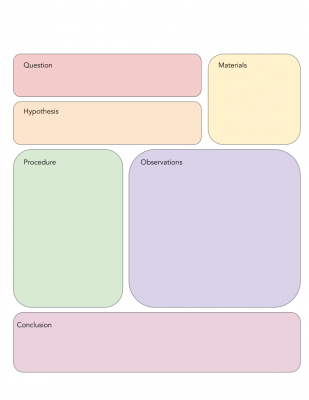


Have students create a slide for each step of the writing process (prewriting, drafting, revising, editing). Or create a slide to house their ideas during a prewriting brainstorming session. On a slide, students could reflect after the writing process about the experience and how they improved or changed.
19. Scientific method
Students could work through the steps of the scientific method on an individual slide each. Or you could create a single slide template with each of the parts of the scientific method where students could log their ideas and findings.
20. Engineering design process
As students think through a new idea from concept to creation, the steps of the engineering design process / design thinking process can help. Like above, students could break down their ideas on individual slides or use a template with space for each step in one.
Get the tools, the practical ideas, and the inspiration to transform the way you use technology in the classroom!
- Lesson ideas and downloadable templates
- A companion webpage full of FREE resources (click here to access NOW)
- Brand new PIRATE engagement hooks
- Encouragement and motivation to start
Taking interactive notebooks to the next level
Once you have your interactive notebook established, you can up-level them by doing some of the following …
1. Color backgrounds
When you use background colors to color code your pages, it’s easy to tell which activity — or which topic — each page belongs to.
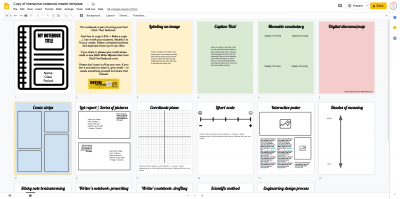
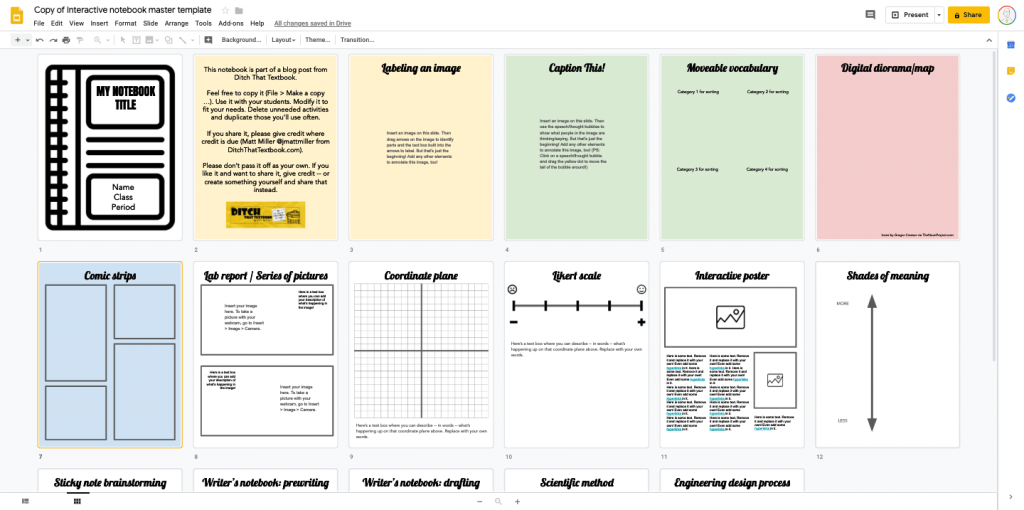

Activities might take one slide to complete. They might take multiple slides to complete. Want to show that several slides belong together in one activity? Or show which slides belong to a particular type of activity? It’s time to color code! Use the “Background …” button and change the fill color. I’ve found that the lighter the color, the better in most instances.
PRO TIP — To see all of your slides at once (like the image to the right), click the slide sorter button. It’s in the bottom left and looks like a 2×3 rectangle grid. Zoom out in your browser (Ctrl + minus) until you get the view you like.
2. Insert background images
Change the background of a slide to an image! We did this with the coordinate plane above. Find an image you want students to work with. By setting it as a background image, students can’t accidentally move it. It’s locked in place!
3. Lock text into place
Speaking of students moving things around by accident, has this ever happened in your class? You put text boxes or other items on a slide and students accidentally move them, rendering your hard prep work useless. Want to lock certain parts of a slide in place so students can’t move them? It’s easier than you think. Design the parts that you want to lock into place in a slide. Then go to File > Download as > JPEG (current slide). That slide is saved as an image file. Change the background image of a student slide to that image. It locks those parts (text, shapes lines, etc.) in place because those parts are saved as an image! Students can then add on top of that background image you created without accidentally moving anything. See how to do this in more detail in this blog post.
4. Create master slides
These are the pre-designed slides you find in the “Layout” button in the toolbar. You can create your own pre-designed slides and have students add them to their notebooks. Just use the “Layout” button in the toolbar or the dropdown button next to the “+” button in the top left corner of the screen. This is great for recurring activities — or to set the background color automatically for your students.
Go to View > Master. All of the possible layouts are in thumbnails to the left of the slide. I suggest deleting any of them your students won’t use. Create a new slide master with the “+” button you use to create a new slide. Design it so that it’s ready for your students to use.
(Note: When you add a text box, click the dropdown triangle. If you add “text box”, it’s text that students can’t edit on the slide. If you add any of the placeholders, students will be able to click and add text to them.)
5. Create sub-notebooks
No, these aren’t notebooks for a substitute teacher. (Although you could totally do that!) These are mini notebooks created for a special purpose. Say that students want to create an activity that’s going to take lots of slides, but they want to create it all in one singular place (not as part of their bigger notebook). Or students’ main notebook is portrait but they want to do something in landscape. Students can create a separate notebook in a brand new slide presentation. Call it a “sub-notebook” (a notebook within a notebook). When they’re done creating that sub-notebook, they can grab a share link using the “Share” button in the top right corner (I like using “anyone with the link can view”). Go into the main notebook and, on one slide, create a link to the sub-notebook. Then, anyone looking through the main notebook can click on the link and be taken to the sub-notebook. It’s like a notebook within a notebook!
6. Create a master notebook that links to all of the other notebooks
If you have students create a new notebook for every chapter or every unit throughout the school year, they’ll need someplace to keep track of all of their notebooks, right? Consider creating a master notebook! Students can create a slides notebook with a page for each chapter notebook they create. On each chapter notebook page, they can display a link to the chapter notebook as well as a summary of what they learned in that chapter and even an example image from the chapter notebook. It’s a great way to reflect on what they learned throughout the whole chapter!
We’re just scratching the surface!
Just about anything you’d want your students to create to demonstrate learning can be captured in a digital interactive notebook.
When they’re done creating, students can easily share their work with each other. Just have students share an “anyone with the link can view” link to their notebooks in Google Classroom or a learning management system.
If you’d like a more social and physically stimulating option, have students do a gallery walk. They bring up their work and sit it on their desks. Then, they stand up and walk around, looking at each other’s work. Students can gather in small groups and present their work to their small group, then go on to the next person’s work to present. For more information on gallery walks, see this post.
For notifications of new Ditch That Textbook content and helpful links:
Are you looking for quality, meaningful professional learning that both equips and inspires teachers?
Matt provides in-person and virtual keynotes, workshops and breakout sessions that equip, inspire and encourage teachers to create change in their classrooms. Teachers leave with loads of resources. They participate. They laugh. They see tech use and teaching in a new light. Click the link below to contact us and learn how you can bring Matt to your school or district!
Is Matt presenting near you soon? Check out his upcoming live events!

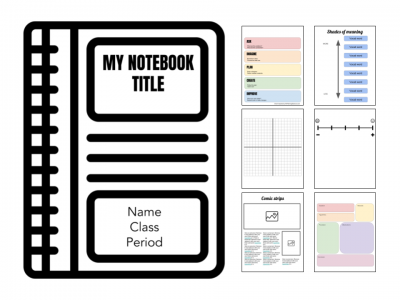



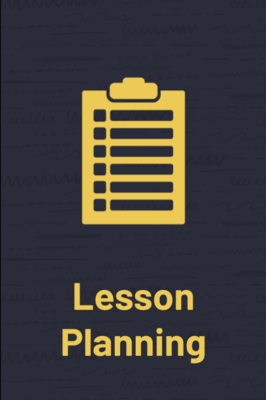


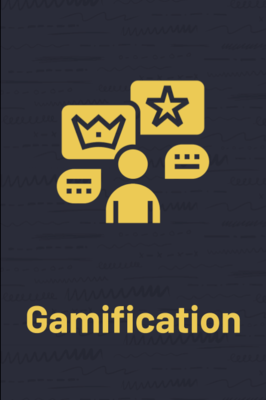


Does anyone know where I can find the Microsoft equivalent to these notebooks? Alas we are not a google campus – I miss it!
wtf is this
Ditch that
Text book
It a nice
Ditch that
Text book
I don’t andrstand number 4
[…] much more flexible solution is available in Google Slides. Teachers can create a notebook in which each slide is a notes template and use Google Classroom or […]
So I am having my 3rd graders use this as a Language Art type notebook. After they have typed something, do they need to turn it in every time as I have created it as an assignment in Google classroom? That may be a dumb question, but I’m new to using digital notebooks this year.
For my digital notebook I assign it to Google Classroom (only the first day that I introduce it). I give them a link that makes them force a copy and they turn in their new notebook.
Students do not have to Submit the assignment for you to see it, so I tell them that their notebooks will be checked in that spot. Each time I assign a page in their notebook I put it in the gradebook as a new assignment under the notebook category.
If they say they cannot edit their notebook, it is because they have submitted it and they must unsubmit to edit.
This keeps all of the notebooks in one place for you to grade.
I keep the notebook assignment at the top of the Classwork tab.
I’m just wondering, do students have to have a Microsoft 365 account or involved with google classroom. Or, can I make individual slides and email them to parents and then parents email me back completed work. I’m new to this idea and am putting a grade 4-7 virtual class. Our school uses Microsoft 365, but we only communicate with families through their family email addresses. Thank you,
Lisa
Very helpful to start the new school year.
Thank you so much for this! I’ve been using physical INBs for a few years now, and was looking for good templates for distance learning. I love that these are simple, clean, and modern – perfect for high school students who don’t want any brightly colored “little kid stuff.”
I teach 4th grade and for the first time ever had a couple of students delete all the slides in their presentation. In all my time using google slides, this was a first. I can this idea catching fire and having other kiddos delete their slides. A few others deleted slides they didn’t want to do. Parents look at it and thing they are done. I look at it and have to figure out what is missing. 😢
Same here, Michelle, with 3rd grade.
Is there any way to annotate/ink up a Google slide. Math symbols are difficult to type and too slow.
I love this digital notebook concept. My question is, can it be ongoing? Can we do notes in it one day, then the next day do another new sections like vocab. Then at the end of the week can they submit it for a notebook check and then I return it, and continue where they left off? Also, can we add new slides daily? Or does it have to be premade?
Late reply is late, and chances are that you might have figured things out yourself by now, but my understanding is that these notebooks can be an ongoing thing. Granted, there are extra steps that students will need to take to make this work smoothly, though, so it’s on you to provide the directions as clearly as possible.
1. Depending on the activity (or activities) du jour, direct your students to the appropriate slide template.
2. Instead of starting the activity straight away, have the students right-click on the slide preview in the list on the left side of your screen, and have them duplicate it. Voila, an instant copy of that slide.
3. Move the slide to where you want it to be within the digital notebook.
4. The students can now edit that slide, while leaving the original template for future use.
Regarding the whole submitting/returning thing, as long as the students have made their notebooks shareable and editable, and they have given you their links, yes, you can do that. Just simply look through your students’ work, and if you have any comments, you could insert a “folded corner” shape off to the side of each slide, and type up your feedback/comments.
As for adding new slides, following the step-by-step instructions I listed will ensure that you’ll never have to worry about running out. Honestly, I’d rather stick with the pre-made stuff, but if you need to make something original that the pre-made templates are not suitable for, yes, you can create something unique.
I hope this reply has been of some use. Even if you’ve figured things out yourself, I’ll just leave this up to help anyone else who’s stumbled upon the DTT website.
[…] Resource: Google Slides interactive notebooks + 20 activities to fill them […]
[…] Google Slides interactive notebooks + 20 activities to fill them […]
[…] Ditch that composition notebook! Create digital interactive notebooks — and use the pre-designed activities in this template. Click here to learn how! […]